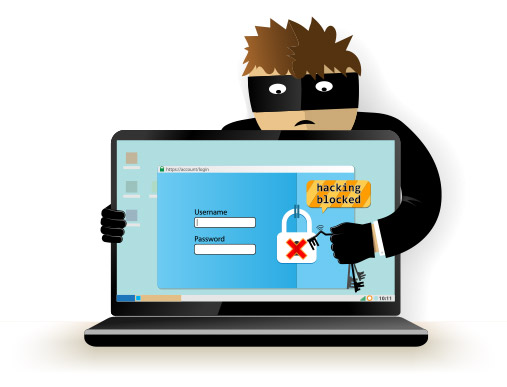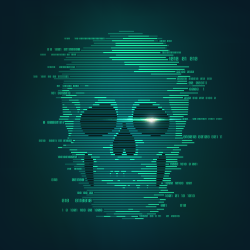What are the Signs of Ransomware in the Computer
Most ransomware today leave a little trace of their execution, so you will never see warning signs of ransomware on the computer. You will only realize that you’ve fallen victim to ransomware when you see the following:

1. Scrambled File Contents
Crypto is a Ransomware that not only scrambles the file name but the entire content to render it useless. Only the decryption key can unscramble it and restore its original format, but that means paying the ransom. So when you notice that your file contents get scrambled for no reason, it sure is one of the signs of ransomware on the computer.
2. The Computer has been Locked
Locker ransomware denies the users get to to the device. It’s not after any file or folder, once it gains to get to the computer, it locks the whole computer with information on how to pay the ransom on screen. If you turn on the computer and you see a red lock on the screen, it’s another one of those signs of ransomware infection.
3. The Web Browsers have been Locked
Ransomware is not only after the computer and files, but it also targets the web browsers, because many people rely on the Internet as a source of information. Without web browsers, nothing will display the information from the World Wide Web. So when you open the web browser and there’s a notice that you have to pay $450 in Bitcoin to unlock, no doubt, ransomware is responsible for it.
4. Encrypted Files
Encrypted files are sure signs of ransomware on the computer. That’s what ransomware is designed for. When you try to open a file such as a photo, document, or video and Windows notifies that you don’t have permission to open this file, it’s a sign of ransomware. You can never recover them without the decryption key unless the files have been backed up.
What to Do to Prevent Ransomware Infection
If your computer has no signs of ransomware, don’t wait until ransomware hits your computer. One way to prevent ransomware from entering the computer is by installing security software with the best ransomware protection. It’s the security software that will take care of ransomware when it attempts to attack the computer. Never hesitate to invest in the best security software because that means safety against ransomware. So what security software provides the best ransomware protection?
Xcitium Advanced Endpoint Protection
Xcitium Advanced Endpoint Protection is the best security software against ransomware. Why? Because it is designed to combat advanced threats such as fileless ransomware. We have mentioned that the ransomware hackers use today leaves a little trace of its activities. That means it needs not to be attached to an executable file to carry out its goal. The phishing emails only need to be opened for ransomware to get installed on the computer memory.
When a fileless ransomware gains access to the computer memory, it’s difficult to remove, so Xcitium developed HIPS or Host Intrusion Prevention System to combat fileless ransomware. HIPS prevents the invasion of fileless malware. It constantly monitors the files that enter the computer memory and writes a script in the registry. So when a fileless ransomware attempts to install itself in the computer memory or modify the registry, HIPS will instantly prevent and delete it.
Xcitium Advanced Endpoint Protection also renders zero-day threats in the computer useless by deploying Auto-Containment that is built on Default-Deny against untrusted files. Some security software allow an unknown or untrusted file to the computer, then sandboxes it later when it turns out to be malicious. The auto-containment technology works differently, it contains the untrusted file first, monitors its behavior inside a virtual container, then releases or removes it depending on the verdict.
Xcitium Advanced Endpoint Protection also prevents ransomware propagation within the network through a packet filtering firewall that monitors the network traffic and data transmission. So when ransomware attempts to travel within the network, the firewall will detect and block it. The firewall is also responsible for protecting the network and endpoint devices against inbound and outbound threats.
If you have Xcitium Advanced Endpoint Protection installed on the computer, you will never see any signs of ransomware in the computer because it provides comprehensive protection against ransomware. Download it now for free.
Get Free Trial Now Free Forensic Analysis
How Ransomware Spreads Signs Of Malware On Pc





